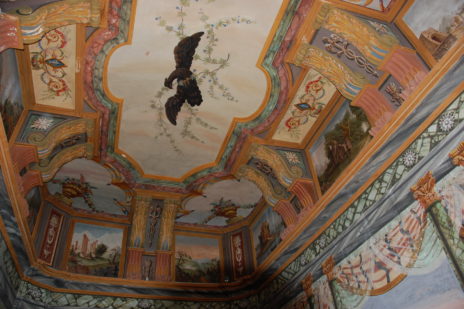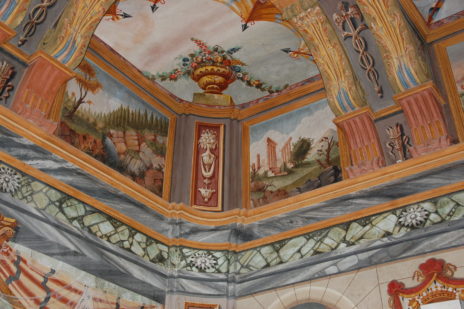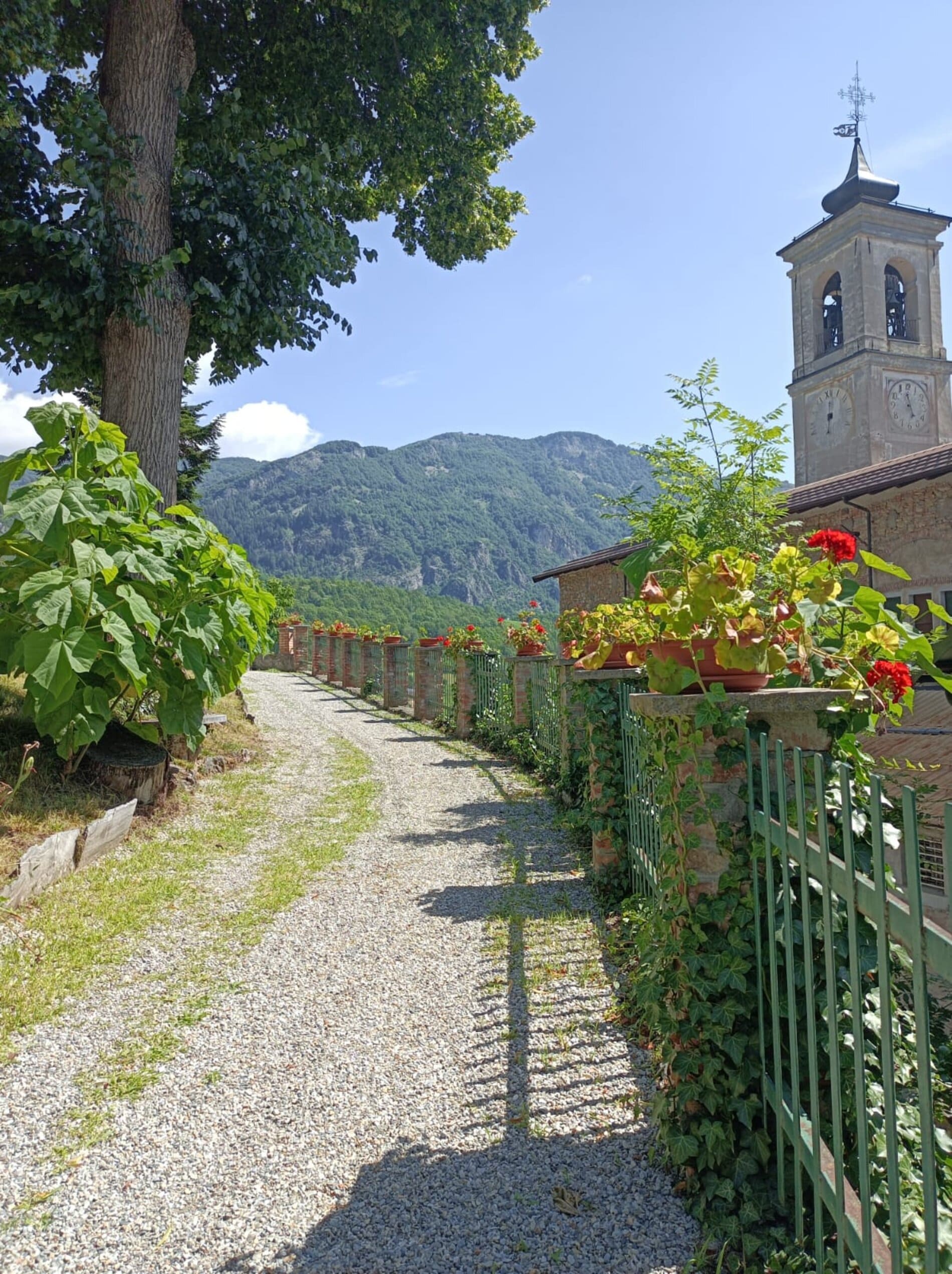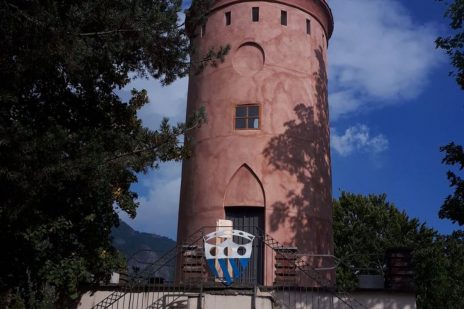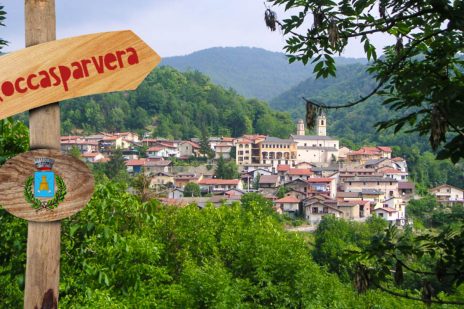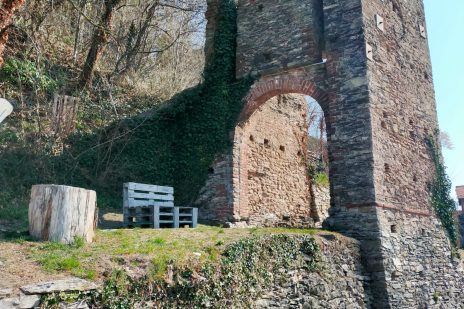THE BOLLERIS CASTLE
The main fortification of the village of Roccasparvera was the Bolleris Castle, lords of the valley for over two centuries.
Dating back to the year 1000, it stood on a promoter and had the function of controlling those who passed on the ancient Roman road and on the Galliarum road that led to France. It had a keep structure and a fence, and was used as a family residence.
The castle was often damaged during the 500 years of battles, until it was completely destroyed by the Cuneo militia commanded by Grasso and the Church in 1559. In 1640 the remains of the castle passed to the Focardi, Counts of Roccasparvera and Castelletto, and in the eighteenth century to the Municipality.
Today you can visit the bases of the towers, the perimeter and the basement.
THE BOLLERIS GATE
The castle was surrounded by walls with watchtowers and three gates.
The only surviving vestige is the imposing Porta Bolleris or Bourela, once equipped with a drawbridge, under which goods and travelers passed, and numerous underground tunnels, passable even on horseback, that reached the Stura: these had to be used in case of sudden flight or to provide water to the besieged country.
THE BOLLERIS PALACE
Palazzo Bolleris, now known as Palazzo Borelli, was built by the Marquis Gaspare Bolleris in 1606 at the foot of the fortress on which stood the Angevin castle. The building houses wall paintings and decorated wooden coffered ceilings in the apartments. The entrance of the palace has a colonnade with a vault decorated with the coat of arms of the Counts Borelli, a small court and a staircase that connects the two blocks through a system of balconies. The heart of the palace was the Hall of Honour with frescoes depicting the Fort of the Consolata and the Lantern of Genoa. On the vault stands a large crow, symbol of the Salmatoris, Lords of Demonte in the period of the Bolleris.
The façade is baroque but underwent alterations by the various heirs of the Bolleris; in 1828 Count Giacinto Bolleri bought from the latter the Palace, the Palazzetto, the ruins of the Angevin castle and the Church of San Bernardo. Between 1834 and 1847 it hosted King Charles Albert of Savoy for the construction of the Fort Albertino of Vinadio. In 1954 the last count Borelli bequeathed all the properties of the House to the Municipality of Demonte.
One part became the Civic Boarding School and another the dormitory. The Palazzetto became the seat of the college, refectory and kitchens.
After the Boarding School ceased its activity, the City restored the Palace and allocated it to the Lalla Romano Space (civic library) and the Multipurpose Cultural Center.
BORELLI PARK
On the ancient hill where in 1250 stood the Angevin Castle, today there is a large park with four terraces. Initially it was accessed only through the Carlo Alberto Gallery; later, the City realized a public access with the double staircase from Piazza Statuto.
Along the avenue, which leads from the Gallery to the first floor of the park, inside a stone building, there is the Borelli icebox that is visible through a glass hatch. On the second floor of the park is the greenhouse with large windows.
The symbol of the Park is the cylindrical crenellated tower, built in the mid-800, which houses inside some frescoes not currently open to visitors.
It represents a happy example of a nineteenth-century garden and is now home to several cultural events.
Come and discover this Park with four terraces and a rich variety of trees and hedges from all over the world.

